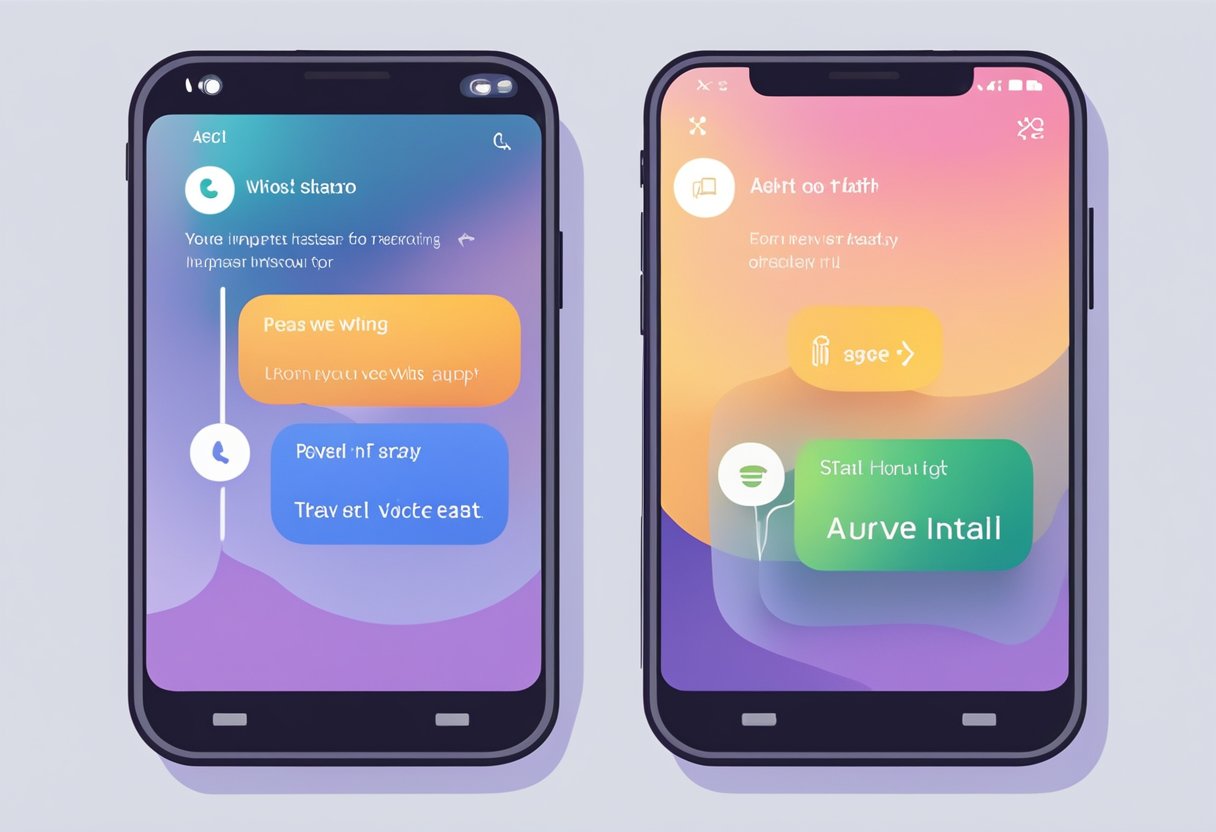Voice search has been gaining popularity over the years, and with the rise of voice assistants such as Siri, Alexa, and Google Assistant, it has become an essential part of our daily lives.
People tend to use long-tail phrases while speaking to voice assistants, which makes it crucial for businesses to optimize their content accordingly.
In this article, we will discuss the importance of targeting long-tail phrases in voice search queries and how to optimize your content to rank higher in voice search results.
Understanding long-tail keywords is the first step towards optimizing your content for voice search queries.
Long-tail keywords are specific phrases that people use while searching for something online. These phrases are usually longer and more precise than short-tail keywords and are often used by people while speaking to voice assistants.
Optimizing your content for long-tail keywords can help you rank higher in search engine results pages (SERPs) and increase your chances of appearing in voice search results.
To optimize your content for voice search, you need to focus on strategies that target long-tail phrases.
These strategies include creating high-quality content that answers users’ questions, using natural language in your content, and optimizing your technical SEO and on-page elements.
By implementing these strategies, you can improve your chances of appearing in voice search results and increase your website traffic.
Key Takeaways
- Understanding long-tail keywords is crucial for optimizing your content for voice search queries.
- Strategies for targeting long-tail phrases include creating high-quality content, using natural language, and optimizing your technical SEO and on-page elements.
- Measuring success and adjusting tactics is essential for improving your chances of appearing in voice search results.
Understanding Long-Tail Keywords
Long-tail keywords are search phrases that consist of three or more words and are more specific than shorter, more generic keywords. They often have lower search volumes but higher conversion rates, as they target users with a clear intent.
The Importance of Keyword Research
To target long-tail keywords, it is essential to conduct thorough keyword research.
Keyword research involves identifying the words and phrases that people use to search for a particular product or service. This process helps to identify the most relevant and profitable keywords to target.
There are various keyword research tools available, such as Keyword Explorer and Google Keyword Planner, that can help businesses identify long-tail keywords with low competition and high search volume.
Using these tools, businesses can understand user intent and identify the most relevant long-tail keywords to target.
The Rise of Voice Search Queries
The rise of voice search queries has made it even more critical to target long-tail keywords.
With voice search, users tend to use more conversational language, making long-tail keywords even more important.
According to a study, 41% of adults and 55% of teens use voice search daily.
As voice search continues to grow, businesses must optimize their content for voice search queries by targeting long-tail keywords that match the conversational language used by users.
Optimizing for Voice Search

As voice search becomes more prevalent, it is important to optimize content for this new medium. One effective strategy is to target long-tail phrases in voice search queries.
Natural Language Processing and AI
Voice search queries are often more conversational and natural than text-based queries. Therefore, optimizing content for voice search requires an understanding of natural language processing and AI.
Natural language processing (NLP) is the ability of computers to interpret human language. NLP is used in voice search to understand the meaning behind spoken words and phrases.
AI is used to analyze data and make predictions about what users are looking for.
By incorporating NLP and AI into content optimization strategies, businesses can create content that is more likely to match voice search queries.
Conversational Queries and User Experience
Another important aspect of voice search optimization is creating content that is conversational in nature.
Voice search queries are often phrased as questions or requests, so content must be structured in a way that answers these queries.
In addition to answering queries, content must also provide a positive user experience.
This means that content should be easy to understand and navigate.
For example, using bullet points or tables to organize information can make it easier for users to find what they are looking for.
Strategies for Targeting Long-Tail Phrases

When it comes to targeting long-tail phrases in voice search queries, there are a few strategies that can help businesses improve their SEO rankings and drive more traffic to their website.
Identifying Long-Tail Keyword Opportunities
The first step in targeting long-tail phrases is to identify keyword opportunities that are relevant to your niche.
This can be done by conducting keyword research using tools like Google Keyword Planner, SEMrush, or Ahrefs.
By analyzing search volume, competition, and relevance, businesses can identify long-tail phrases that are specific to their industry and have the potential to drive targeted traffic to their website.
Creating High-Quality Content for Niche Topics
Once businesses have identified long-tail keyword opportunities, the next step is to create high-quality content that provides specific information on those topics.
This can include blog posts, articles, videos, or podcasts that are optimized for voice search queries.
By creating content that is relevant to your niche and provides value to your audience, businesses can establish themselves as thought leaders and increase their visibility in search engine results pages.
To create high-quality content for niche topics, businesses should focus on providing detailed and comprehensive information that answers specific questions or solves problems for their target audience.
This can include step-by-step guides, how-to articles, or product reviews that provide in-depth information on a particular topic.
Technical SEO and On-Page Elements

When it comes to optimizing for voice search, technical SEO and on-page elements play a crucial role in improving your website’s visibility. In this section, we will discuss two key elements of technical SEO and on-page optimization that can help you target long-tail phrases in voice search queries.
Mobile Optimization and Website Speed
Mobile optimization and website speed are two critical factors that can impact your website’s visibility in voice search results.
With more people using their mobile devices to perform voice searches, it is essential to ensure that your website is mobile-friendly and loads quickly.
According to a study by Google, the average mobile website takes 22 seconds to load, and 53% of mobile users will leave a website that takes longer than three seconds to load.
To improve your website’s speed, you can implement several measures, including optimizing images, minifying CSS and JavaScript files, and leveraging browser caching.
In addition to website speed, mobile-friendliness is also a crucial factor in voice search optimization.
Google has stated that mobile-friendliness is a ranking factor in search results, and websites that are not mobile-friendly may not appear in voice search results.
To ensure that your website is mobile-friendly, you can use Google’s Mobile-Friendly Test tool to check your website’s mobile-friendliness.
Structuring Content with H1 Tags and Page Titles
Another critical element of on-page optimization for voice search is structuring your content with H1 tags and page titles.
H1 tags are the main headings of your web page, and they provide context to search engines about the content of your page. Including your target long-tail phrases in your H1 tags can help you rank higher in voice search results.
Page titles are also essential for voice search optimization, as they provide a brief summary of the content on your web page.
Including your target long-tail phrases in your page titles can help improve your website’s visibility in voice search results.
Measuring Success and Adjusting Tactics

After implementing a long-tail keyword strategy for voice search queries, it is essential to measure its effectiveness. This section covers the two main aspects of measuring success and adjusting tactics: analyzing metrics with Google Analytics and Ahrefs, and adapting to emerging trends and algorithm updates.
Analyzing Metrics with Google Analytics and Ahrefs
Google Analytics and Ahrefs are two powerful tools that can help businesses analyze metrics related to their long-tail keyword strategy.
Google Analytics provides insights into user behavior, such as the number of visits, bounce rates, and conversion rates.
Ahrefs, on the other hand, provides information on search engine ranking, backlinks, and organic traffic.
By analyzing these metrics, businesses can determine the effectiveness of their long-tail keyword strategy and make necessary adjustments.
For instance, if a business is getting high conversion rates from a particular long-tail keyword, they can focus on optimizing their content around that keyword.
Similarly, if a business is not getting the desired results from a particular keyword, they can tweak their content to better match the user intent.
Adapting to Emerging Trends and Algorithm Updates
Search engine algorithms are constantly evolving, and businesses must adapt to these changes to maintain their online visibility.
For instance, Google’s BERT algorithm update in 2019 made significant changes to how the search engine processes natural language queries.
As a result, businesses must optimize their content for natural language and conversational queries to stay ahead of the curve.
Similarly, emerging trends such as the rise of voice search and smart speakers require businesses to optimize their content for voice search queries.
By keeping up with emerging trends and algorithm updates, businesses can adjust their long-tail keyword strategy accordingly and stay ahead of their competition.



